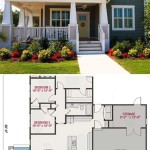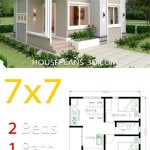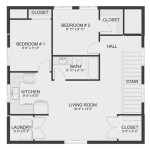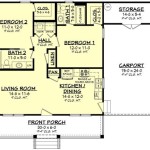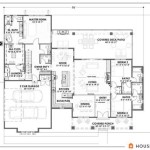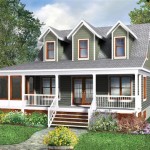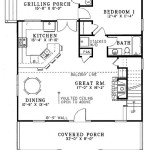Single Slope Roof House Plans: A Guide to Designing and Building
Single-slope roof house plans offer a unique and modern aesthetic that can add a touch of sophistication to any home. These roofs are characterized by a single, sloping plane that extends from the front to the back of the house, creating a sleek and minimalist look.
While single-slope roofs may seem simple in design, they require careful planning and execution to ensure structural integrity and functionality. This article will guide you through the key considerations for designing and building single-slope roof house plans.
Advantages of Single Slope Roofs
- Aesthetic appeal: Single-slope roofs offer a contemporary and visually striking look that can enhance the overall appearance of a home.
- Cost-effectiveness: Compared to traditional gable or hip roofs, single-slope roofs require less materials and labor, resulting in lower construction costs.
- Efficient drainage: The single slope allows for quick and efficient water runoff, reducing the risk of leaks and water damage.
- Energy efficiency: Single-slope roofs can be designed to incorporate solar panels or green roofs, improving the energy efficiency of the home.
Considerations for Designing Single Slope Roofs
When designing single-slope roof house plans, several factors must be considered to ensure structural integrity and functionality:
- Pitch: The pitch of a single-slope roof refers to the angle of inclination. The steeper the pitch, the more water it will shed and the less likely it is to leak.
- Materials: Various roofing materials can be used for single-slope roofs, including metal, shingles, or even green materials like sod or plants.
- Drainage: Proper drainage is crucial to prevent water buildup and leaks. Gutters and downspouts must be installed to direct water away from the house.
- Support: Single-slope roofs require proper support to handle the weight of the roof and any additional loads, such as snow or wind. Structural beams and trusses are typically used for this purpose.
- Energy efficiency: Incorporating insulation and ventilation into the roof design helps improve energy efficiency and reduce heating and cooling costs.
Building Single Slope Roofs
Building single-slope roofs involves several steps that require specialized skills and expertise. It's recommended to hire a qualified contractor or architect to ensure proper construction:
- Framing: The roof framing forms the structural support for the roof, including beams, rafters, and sheathing.
- Insulation: Insulation is installed between the rafters to provide thermal protection.
- Roofing: The roofing material, such as metal or shingles, is installed over the sheathing and secured with nails or fasteners.
- Gutters and downspouts: Gutters and downspouts are attached to direct water away from the house.
Conclusion
Single-slope roof house plans offer a unique and modern aesthetic that can enhance the appearance of any home. By carefully considering the design factors and building techniques discussed in this article, you can ensure the structural integrity and functionality of your single-slope roof. With its sleek lines and efficient drainage, a single-slope roof can add a touch of sophistication and style to your dream home.

Single Sloped Roofs Ramp Up Modern Homes

Slanted Single Pitch Shed Roof House Plans Floor

16 Examples Of Modern Houses With A Sloped Roof

Single Slope Roof Patio Roofs Shed Modern Design Contemporary Exterior House

Buy Single Roof House Plan Eplan

House Plans 8x6 With 2 Bedrooms Slope Roof Construction Plan Gable

Single Sloped Roofs Ramp Up Modern Homes

Single Slope Metal Building Worldwide Steel Buildings Projects

Modern And Cool Shed Roof House Plans Houseplans Blog Com

Affordable Home Plan Ch457 House

